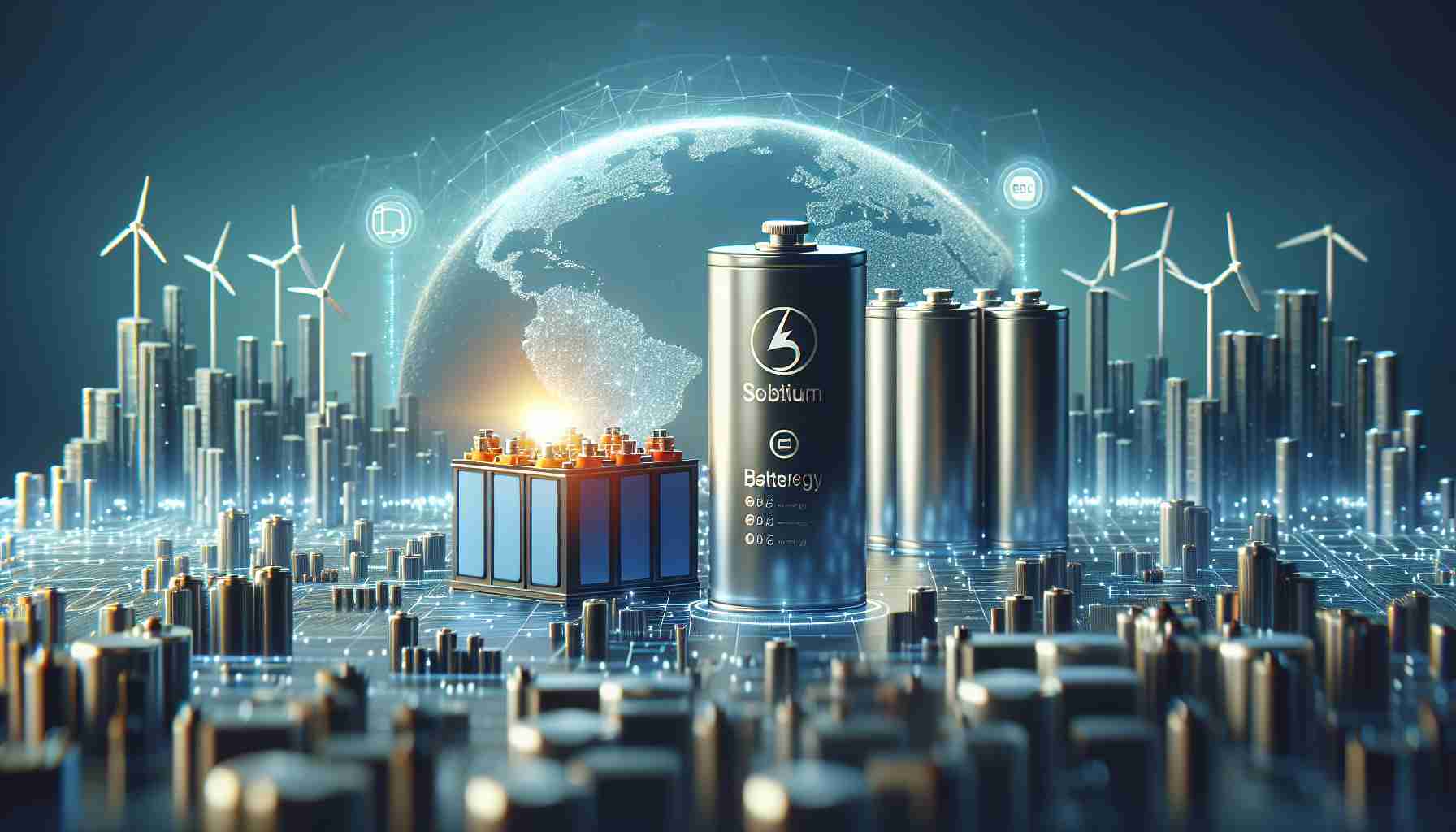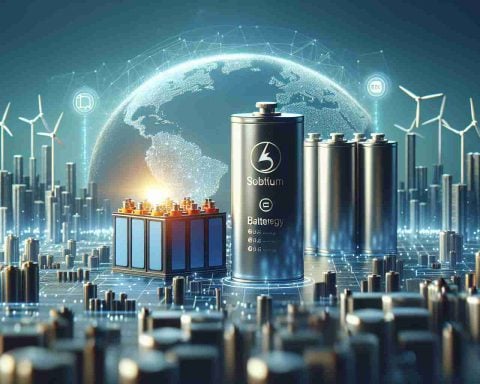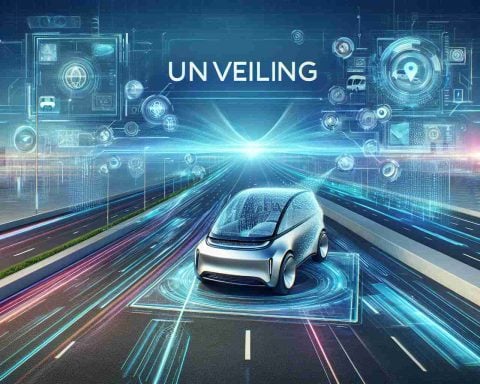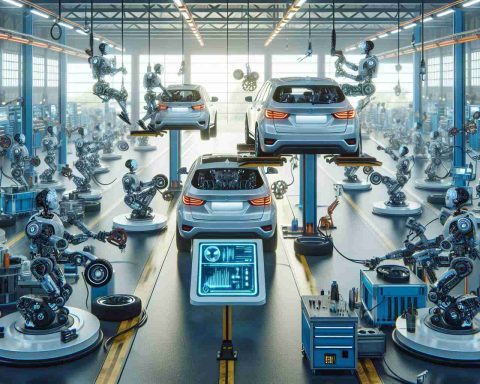- Sodium-ion batteries emerge as a sustainable energy storage solution, using abundant and inexpensive sodium instead of scarce materials.
- This technology could address the challenge of efficiently storing energy from solar power.
- The Fraunhofer Institute in Germany is exploring the feasibility of integrating sodium-ion batteries into existing lithium-ion production facilities.
- The SIB:DE initiative studies the potential for seamlessly retrofitting lithium systems with sodium-ion technology at reduced costs.
- China leads by example with industrial-scale energy storage using sodium-ion batteries, suggesting viability for global adoption.
- Nations are encouraged to consider sodium-ion batteries as a pathway to affordable, safe, and scalable energy solutions.
- Adopting sodium-ion technology represents not just an innovation but a necessary shift towards a more sustainable energy future.
Amid a global thirst for sustainable energy solutions, a new contender emerges on the horizon of innovation—sodium-ion batteries. Imagine a world where energy storage no longer hinges on expensive and scarce materials. Instead, commonplace, abundant sodium transforms the landscape of battery technology.
The sprawling fields of photovoltaics promise a future of clean, inexhaustible energy harnessed from the sun, yet they face a critical hurdle: how to store that energy efficiently and cost-effectively. Enter sodium-ion technology, a vivid beacon of hope. Picture sodium, a material as familiar as table salt, stepping onto the stage as a key player in the global energy game.
In Germany, minds at the Fraunhofer Institute for Manufacturing Technology and Advanced Materials Research (IFAM) scrutinize the practicality of integrating sodium-ion innovation into existing lithium-ion production lines. The SIB:DE research initiative, a consortium of industry experts and academic thinkers, fervently examines this potential metamorphosis. Here lies an opportunity to retrofit sodium-ion technology, merging it seamlessly with lithium-based systems without the hefty price.
Across the globe, China has already dipped its toes in these untapped waters, launching industrial-scale energy storage facilities powered by sodium-ion batteries. Their example whispers possibilities to other nations: Could sodium be our ticket to an affordable, safe, and scalable energy future?
As the world consumes increasingly finite resources, embracing sodium-ion batteries isn’t just an exciting venture—it’s an imperative shift. This vibrant movement not only challenges the status quo but also paves the way for a dynamic energy revolution. The future of power, it seems, could well lie in the simplest of elements beneath our feet.
The Hidden Power of Sodium-Ion Batteries: A New Era of Energy Storage
As the quest for sustainable and affordable energy solutions intensifies globally, sodium-ion batteries emerge as a promising alternative to lithium-ion systems. By leveraging the plentiful and low-cost nature of sodium, these battery systems offer a sustainable approach to storing energy, especially crucial for harnessing and maximizing the potential of renewable sources like solar power. But what else should you know about sodium-ion batteries that the article missed?
Additional Information on Sodium-Ion Batteries
1. Abundance of Sodium: Sodium is the sixth most abundant element in the Earth’s crust, unlike lithium, which is more geographically constrained. This could lower the risk of supply chain issues and reduce costs significantly.
2. Environmental Impact: Sodium-ion batteries may offer a more environmentally friendly alternative since sodium mining and extraction are less destructive to the environment compared to lithium. Additionally, they pose fewer risks related to battery disposal and recycling.
3. Performance Metrics: While sodium-ion batteries still lag behind lithium-ion batteries in terms of energy density, recent advancements have been promising. Improvements in cathode and anode materials are helping to close this gap, potentially making sodium-ion batteries suitable for various applications, from grid storage to portable electronics.
4. Research and Development: Global research is accelerating in countries like the United States, India, and Denmark, with focus areas including improving energy density, charge cycles, and performance at low temperatures.
5. Commercial Prospects: Companies such as Natron Energy and CATL are investing in developing commercial sodium-ion battery products, showcasing the growing industrial interest.
Important Questions Answered
Q: Are sodium-ion batteries compatible with existing lithium-ion infrastructure?
A: Yes, to a certain extent. One of the advantages of sodium-ion technology is that it can often be integrated into existing lithium-ion battery manufacturing processes. This reduces the need for significant additional infrastructure investment.
Q: What are the potential applications of sodium-ion batteries?
A: Sodium-ion batteries show potential in large-scale energy storage solutions, such as grid energy storage, and could eventually find applications in consumer electronics and electric vehicles once their energy density improves.
Q: Why hasn’t sodium-ion technology been adopted more widely yet?
A: While promising, sodium-ion technology is still being refined. Challenges include improving energy density and cycle life to match those of lithium-ion batteries. Once these hurdles are overcome, broader adoption is likely.
Related Links
– Fraunhofer Institute
– CATL
– Natron Energy
In summary, sodium-ion batteries symbolize a new frontier in energy storage technology, offering a sustainable and cost-effective alternative. With ongoing research and development, they hold the potential to transform energy markets globally. Welcome to the dawn of a sodium-powered era!


















